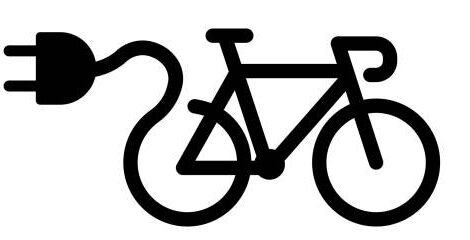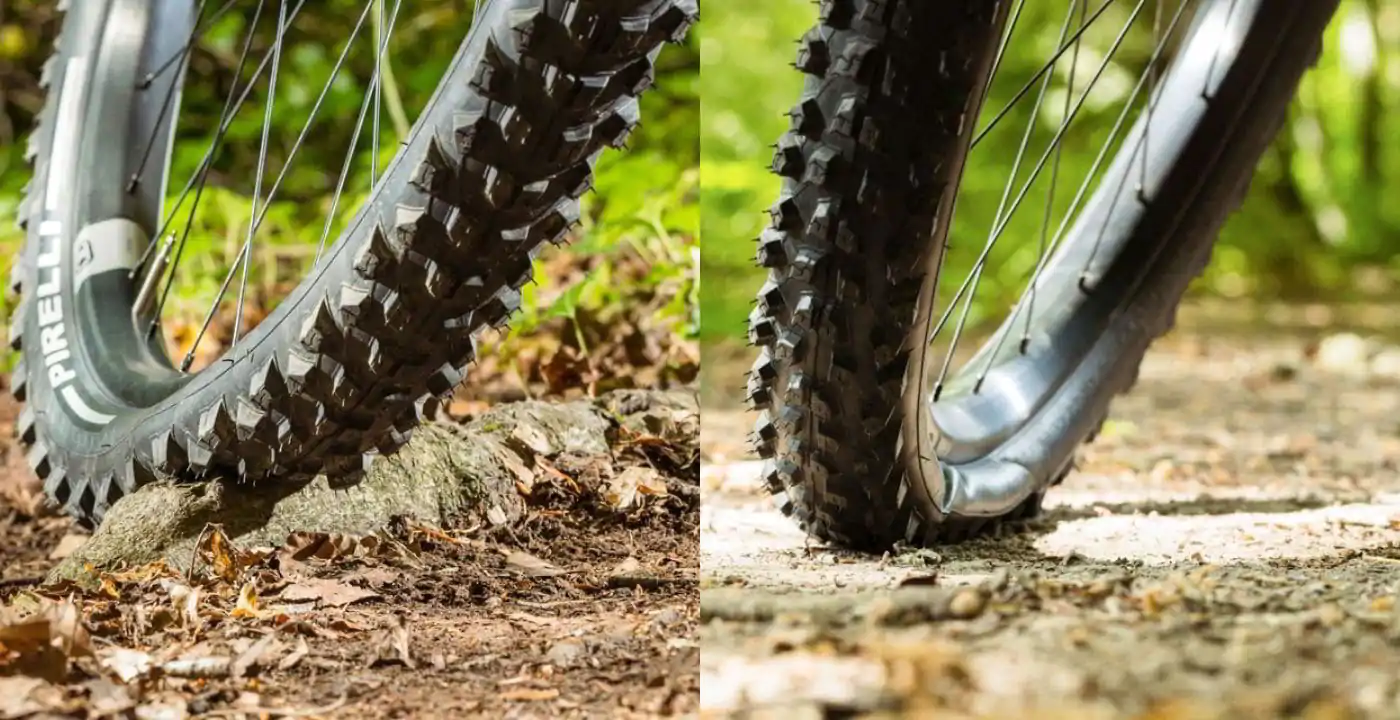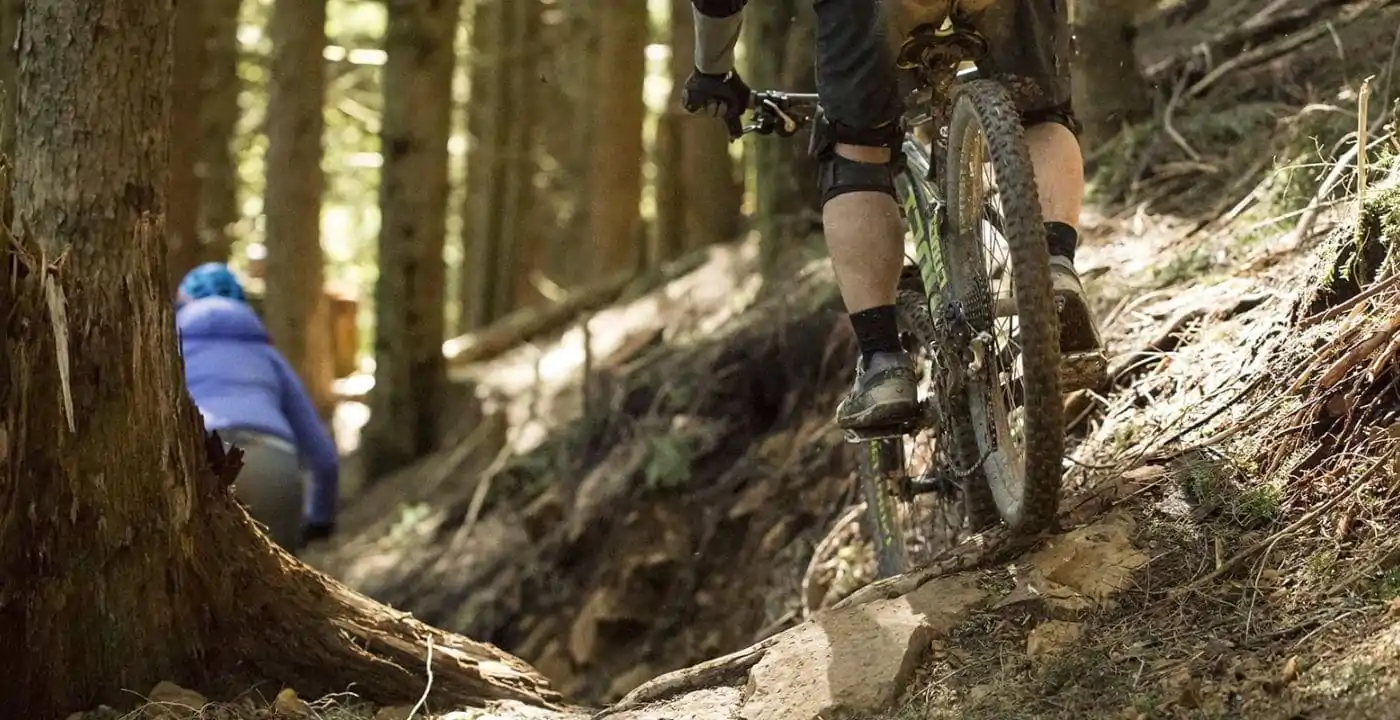Why Tire Pressure Matters: A Crucial Factor in Mountain Biking Performance
Finding the best mountain bike tyre pressure is crucial for optimal performance. Tire pressure significantly impacts several key aspects of your mountain biking experience. Proper inflation directly affects traction, allowing you to maintain control and grip on varied terrains. Conversely, incorrect pressure leads to reduced grip, increasing the risk of slips and falls. Rolling resistance is also affected; over-inflation increases resistance, making pedaling harder, while under-inflation causes excessive friction and energy loss. Comfort is another important factor. Under-inflated tires provide a smoother ride, absorbing shocks and vibrations from the trail. However, excessive under-inflation can lead to pinch flats. Over-inflated tires, on the other hand, transmit every bump and rock directly to the rider, leading to discomfort and fatigue. Finally, tire pressure influences puncture resistance. Properly inflated tires are less prone to punctures, as they are better able to withstand impacts. Finding the sweet spot – the best mountain bike tyre pressure for your specific needs – balances these factors for an optimal ride. Understanding how pressure affects these elements is vital for maximizing your enjoyment and safety on the trails.
The consequences of improper tire pressure are far-reaching. Under-inflation reduces traction, making cornering unpredictable and increasing the likelihood of losing control, especially on challenging terrain. This lack of control can lead to accidents and injuries. Over-inflation, conversely, compromises comfort and grip, reducing your ability to maintain speed and maneuver efficiently. The increased rolling resistance also leads to unnecessary fatigue. Furthermore, both under- and over-inflation increase the risk of punctures. Under-inflation can lead to pinch flats, where the tire is compressed between the rim and an obstacle, causing damage. Over-inflation makes the tire less resilient to impacts, also increasing the chances of punctures. Therefore, achieving the best mountain bike tyre pressure is not just about performance; it is about safety and enjoyment.
Achieving the best mountain bike tyre pressure requires careful consideration of several factors. Rider weight plays a crucial role, with heavier riders generally needing higher pressures to support their weight. Terrain significantly influences optimal pressure. Loose, soft soil requires lower pressure for increased traction, while hardpack trails benefit from higher pressure to reduce rolling resistance. Riding style also matters. Aggressive riders might prefer slightly lower pressure for better grip during challenging maneuvers, while those who prefer a smoother, less demanding ride might opt for higher pressures. Finally, tire width influences optimal pressure. Wider tires generally allow for lower pressures while maintaining adequate support. The best mountain bike tyre pressure is a balance between all these aspects, requiring careful experimentation and adjustment.
Understanding Your Tires and Their Recommended Pressure Ranges
Tire pressure recommendations are usually printed on the sidewall of most mountain bike tires. These will typically be a range, for example, “30-45 PSI”. These ranges serve as guidelines. They can be adjusted based on rider weight, terrain type, and personal riding style. Finding the best mountain bike tyre pressure involves understanding these variables and how they interact. Different tire types, such as XC, trail, enduro, and downhill, have varying ideal pressure ranges. XC tires, designed for speed and efficiency on smoother terrain, usually recommend higher pressures. Conversely, downhill tires, built to withstand significant impacts at high speeds, often suggest lower pressures for better grip and impact absorption. Riders should always consult their tire’s sidewall markings as a starting point. This information provides a crucial foundation for determining the optimal pressure.
Rider weight significantly influences best mountain bike tyre pressure. Heavier riders generally require higher pressures to prevent bottoming out and maintain sufficient support. Conversely, lighter riders might find lower pressures offer improved traction and comfort. The terrain also plays a critical role. Hardpack trails often allow for higher pressures to minimize rolling resistance. Loose soil, rocks, and roots necessitate lower pressures for increased traction and bump absorption. This allows for better control and reduces the risk of losing grip or suffering a puncture. Consider your riding style too. Aggressive riders who frequently tackle technical descents might prefer lower pressures for increased grip and stability. Relaxed riders prioritizing comfort and speed on smoother trails may opt for slightly higher pressures to reduce rolling resistance. Tire width also factors into the equation. Wider tires often require less pressure to achieve optimal performance, while narrower tires may need higher pressures to prevent excessive deformation.
Ultimately, achieving the best mountain bike tyre pressure is a process of experimentation and refinement. Starting with the manufacturer’s recommended range and then making small adjustments based on individual preferences and terrain is key to success. Remember that consistent pressure across both tires is vital for balanced handling and control. Finding the perfect pressure can dramatically improve the riding experience. It significantly contributes to comfort, safety, and overall performance. Remember that finding the best mountain bike tyre pressure is a personal journey. Experimentation will lead to better understanding of what works best for you and your bike.
How to Check Your Current Tire Pressure and Choose the Right Gauge
Accurately checking your mountain bike tire pressure is crucial for optimal performance and safety. A reliable pressure gauge is essential for this process. Digital gauges offer precise readings, while analog gauges provide a quick visual check. Regardless of type, ensure the gauge is calibrated and in good working order. To check your tire pressure, first, remove the valve cap from your tire valve. Then, firmly attach the gauge to the valve stem. Read the pressure displayed on the gauge. This reading will determine if your tires are inflated to the best mountain bike tyre pressure for your riding conditions.
Several factors influence the selection of the best pressure gauge for your needs. Consider portability, ease of use, and accuracy. A small, lightweight gauge is ideal for carrying on rides. Digital gauges usually provide higher accuracy than analog gauges. However, analog gauges are generally more durable and less susceptible to damage. When purchasing a gauge, compare different models and read reviews to find one that meets your needs and budget. Remember, accurate pressure readings are vital to achieving the best mountain bike tyre pressure for your specific situation. Investing in a high-quality gauge ensures reliable results.
Once you have a reliable gauge, checking your tire pressure becomes straightforward. Simply attach the gauge to the valve stem, and note the reading. Compare this reading to the recommended pressure range printed on your tire’s sidewall. Remember, this range provides a starting point. You may need to adjust the pressure based on rider weight, terrain, and personal preferences to find your ideal pressure and achieve the best mountain bike tyre pressure for your ride. Regular pressure checks are essential, especially before and after every ride, to maintain optimal performance and safety. Consistent pressure contributes to a smoother, more controlled ride, improving overall handling and grip. Consistent monitoring helps you achieve the best mountain bike tyre pressure.
Mastering the Art of Fine-Tuning: Factors Affecting Ideal Pressure
Finding the best mountain bike tyre pressure involves understanding several key factors. Rider weight significantly influences pressure needs. Heavier riders generally require higher pressures to support their weight and prevent bottoming out. Conversely, lighter riders may find lower pressures more comfortable and provide better traction. Terrain plays a crucial role. Hardpack trails allow for higher pressures, minimizing rolling resistance. Loose soil, rocks, and roots demand lower pressures for increased traction and grip, preventing punctures and improving control. Consider the impact of tire width; wider tires generally allow for lower pressures while maintaining sufficient support.
Riding style also affects the best mountain bike tyre pressure. Aggressive riders who tackle challenging descents and technical sections benefit from lower pressures for increased grip and shock absorption. A more relaxed riding style on smoother trails might allow for higher pressures to reduce rolling resistance and improve efficiency. Experimentation helps determine the optimal balance. Start with the manufacturer’s recommended pressure range as a baseline. Adjust pressures incrementally, noting the changes in handling, grip, and comfort. Remember, finding the sweet spot is a process of trial and error, tailored to your individual preferences and the specific riding conditions.
To achieve the best mountain bike tyre pressure, consider these variables. Tire type influences pressure. Cross-country tires, designed for efficiency, often use higher pressures. Enduro and downhill tires, built for aggressive riding, typically use lower pressures for maximum grip. Always check the sidewalls for the manufacturer’s recommended pressure range. This provides a starting point, but individual adjustments are key. Remember that consistent pressure checks are important for optimal performance and safety. Regularly check and adjust your tire pressure before each ride to account for temperature fluctuations and changing terrain.
How to Adjust Tire Pressure Based on Terrain and Riding Conditions
Finding the best mountain bike tyre pressure involves adapting to changing terrain. Loose, sandy trails require lower pressure. This increases tire contact and improves traction, preventing slippage. Lower pressures also enhance grip on technical descents, providing better control and reducing the risk of losing traction on uneven surfaces. Conversely, smooth, hardpack trails benefit from higher pressures. Increased pressure minimizes rolling resistance, allowing for faster speeds and increased efficiency. The ideal pressure for hardpack trails helps maintain momentum, making the ride smoother and less energy-intensive. Remember, experimentation is key to finding your optimal pressure for various conditions. Consider starting within the recommended pressure range printed on the sidewall and fine-tune from there.
Different riding styles also influence best mountain bike tyre pressure. Aggressive riders who frequently tackle challenging terrain might prefer lower pressures for enhanced grip and control. This allows them to maintain confidence and stability while navigating obstacles. In contrast, less aggressive riders or those prioritizing comfort on smoother trails may find that higher pressures provide a better balance of speed and comfort. Think of it like adjusting the suspension on your bike: softer for rough terrain and firmer for smoother rides. The best mountain bike tyre pressure is relative to your riding style and the conditions you encounter. Experiment to discover what pressure best suits your needs and preferences on each type of trail.
Let’s explore some specific examples. For a technical descent filled with rocks and roots, a lower pressure (towards the lower end of your tire’s recommended range) will be significantly beneficial. This maximizes the tire’s contact patch, giving you better grip and control. Conversely, for a long climb on a hardpack trail, a higher pressure (towards the upper end of the range) will improve efficiency and reduce energy wasted on rolling resistance. Remember, the best mountain bike tyre pressure is not a fixed number but a variable that changes based on terrain. Don’t be afraid to make small adjustments throughout a ride to optimize performance. This allows for the best handling in various scenarios and makes the overall ride much more enjoyable. Always consider both riding style and the unique demands of the terrain.
Experimentation and Finding Your Personal Sweet Spot: Achieving the Best Mountain Bike Tyre Pressure
Finding the best mountain bike tyre pressure is a journey of experimentation. Begin by checking the manufacturer’s recommended pressure range on your tires’ sidewalls. This provides a starting point. However, rider weight, terrain, and riding style significantly influence optimal pressure. Start within the recommended range, slightly adjusting pressure after each ride. Note the changes in handling, grip, and comfort. A lower pressure generally improves traction on loose surfaces or technical descents. Higher pressure enhances rolling efficiency on hardpack trails. This iterative approach allows you to fine-tune your tire pressure for optimal performance.
Consider keeping a detailed log of your experiments. Record the pressure used, the terrain ridden, and your subjective assessment of handling, grip, and comfort. This data will help you understand how different pressures affect your riding experience. Remember that the best mountain bike tyre pressure is highly personalized. What works perfectly for one rider might not be ideal for another. Factors like riding style – aggressive versus relaxed – also impact optimal pressure. Aggressive riders may favor slightly lower pressures for enhanced grip during challenging maneuvers, while relaxed riders might prioritize higher pressures for improved rolling resistance on smoother trails. Consistent experimentation is key to discovering your personal sweet spot.
Don’t be afraid to deviate from the manufacturer’s recommendations. The suggested pressure range is a guideline, not a rigid rule. Slight adjustments can significantly improve your riding experience. Pay close attention to how the tires feel. Are they adequately supporting your weight? Do they grip well in corners and on climbs? Do they roll easily on smoother sections? The goal is to find a balance between traction, comfort, and rolling resistance. This balance will help you achieve the best mountain bike tyre pressure for your individual needs and preferences. Refining your tire pressure is an ongoing process, but the rewards of improved performance and a more enjoyable ride are well worth the effort.
Troubleshooting Common Tire Pressure Issues
Frequent punctures can plague mountain bikers. Incorrect tire pressure is a major culprit. Underinflation increases the risk of pinch flats, where the tire is squeezed between the rim and an obstacle. Overinflation, conversely, reduces traction and increases the chance of punctures from impacts. Finding the best mountain bike tyre pressure significantly minimizes these risks. Regularly inspect your tires for embedded debris. Repair or replace damaged tires promptly. Choosing the right tires for your riding style and terrain also plays a crucial role in preventing punctures.
Poor handling often stems from improper inflation. Underinflated tires lead to sluggish handling and reduced responsiveness, making it harder to corner and maneuver effectively. Overinflation results in a harsher ride and less grip, impacting control, especially on uneven terrain. The best mountain bike tyre pressure strikes a balance, providing both grip and responsiveness. Experiment with slight pressure adjustments to find the sweet spot for your bike, weight, and riding style. Consider the impact of tire width; wider tires generally require lower pressures for optimal performance.
Pinch flats are a serious concern. They occur when the inner tube is pinched between the rim and an object, resulting in a sudden and complete loss of air. Maintaining the best mountain bike tyre pressure significantly reduces this risk. Proper tire pressure cushions the impact, preventing the tube from getting pinched. When riding on particularly rough terrain, slightly reducing tire pressure can provide additional protection. Remember that the correct pressure is crucial for a safe and enjoyable ride. Regularly check your tire pressure before each ride, adjusting as needed depending on the terrain and conditions.
Maintaining Optimal Tire Pressure: Tips and Best Practices
Maintaining the ideal best mountain bike tyre pressure is crucial for consistent performance and safety on the trail. Regular checks are essential for optimal performance and safety. Prioritize checking tire pressure before and after every ride. A reliable pump and pressure gauge are vital components in any mountain biker’s toolkit.
Consistency is key when it comes to tire pressure. Regularly checking and adjusting pressure helps to ensure consistent performance throughout rides. This preventative measure can help prevent punctures and pinch flats. Carry a portable tire pump and pressure gauge for quick adjustments on the go. Be sure to inspect the tire’s condition before and after each ride. Look for any signs of wear, damage, or debris that might affect the tire pressure or overall performance.
Optimal tire pressure significantly influences ride quality and safety. Consistent checks ensure proper pressure for the current terrain and riding conditions. Proper tire maintenance is essential for a safe and enjoyable mountain biking experience. Use the guidelines and tips outlined in this article to achieve the best mountain bike tyre pressure for your ride.




